






Planning the Learning Journey
Values Based Curriculum Planning

























































Which of these teacher roles did you play today?
Author, banker, computer technician, dentist, environmental officer, farmer, gopher, hairdresser, investigator, judge, key master, lawyer, musician, nurse, orthopaedic organiser (tier of shoe laces), politician, quality control officer, record keeper, sports trainer, timetabler, umpire, vocalist, welcomer, xtra supervisor, youth pastor, zoo keeper.
Can you think of more roles?
This list just describes a teacher’s morning tea break!
Teachers are multi-talented and very busy people. We can start a year with the best intentions of integrating a Christian World View into every element of our teaching, but by the end of the first week, we can often get so busy that the important gets swamped by the urgent. The following curriculum planning framework helps teachers integrate a biblical world view into the everyday planning for classroom learning.
The following curriculum planning framework helps teachers integrate a Christian, Biblical world view into the everyday planning for classroom learning.
“ ”
Learning is a journey for all our lives. As teachers, we map out a curriculum that will equip students for success on their life journey. God has called us to serve in a great profession.
We hope that the practical tools that the teaching team at Mackay Christian College have developed to do their planning will help you bring glory to God in your classroom, and be the start of a great learning adventure with your students.
Starting from the same place The journey starts with some shared beliefs.
Do you share these beliefs about learning? It directly affects the expectations you have of students, and the type of curriculum you will plan.
God has designed each of us with unique abilities, but He especially designed our brains to think and learn...we all can do it. We may like to learn in different ways…some people by reading, others by doing, some quickly, others with lots of help… but learning is something we all do. In a learning community, everyone is expected to learn, especially our teachers about how to help our students become confident and successful learners.
You have just read this sentence, whether you wanted to or not. Learning is a lot like that sentence. When you learn something it changes the way you think whether you want it to or not. Learning creates new neural pathways and our memory files sensory images away for years. God’s word tells us in Romans 12 to “be transformed by the renewing of your mind.” We need to make sure our curriculum programs are filled with “good things” and they are taught from a Christian World View. When your mind is renewed through learning, whether it is a new skill, a new idea, or a new way of behaving, it can be life changing.
Old or young, student or teacher, professional or part-timer, everyone needs to keep learning in our rapidly changing world. Think of the world our grandparents were born into….no electricity, no modern transport or media…then think of the many things they had to learn in their lifetime….like how to operate a remote control TV and microwave at age 92. They had to learn how to make some amazing changes throughout their lives, or they would have missed out on living. So do we. We need to keep learning, to fully engage with all of life’s changing possibilities. We also need to keep learning all through our life from the unchanging, challenging and complex truths in God’s word, so we can really experience a new and abundant life in Jesus.
Once students finish school, their learning journey is not over. New adventures await each one of us when we trust in God.
Try the three beliefs about learning with a small change….
Learning about Jesus is for Everyone. Learning about Jesus is Transforming Learning about Jesus is forLife.
Do not conform any longer to the pattern of this world, but be transformed by the renewing of your mind. Then you will be able to test and approve what God’s will is – his good, pleasing and perfect will.
Romans 12 v 2
Jesus Christ is the foundation of all our learning.
In Genesis 1 and John 1, Jesus is described as the Word of God, through whom all things were created. All creation and knowledge comes from God and as we learn about His world, we learn about God’s character. This is a foundational belief that the following curriculum planning model is built on.
As Graham Leo explains,
“When we operate a Christian school (just as when we operate a suburban church or an overseas mission) we are limited in our ‘construction’ plans. Read 1 Cor 3:10-15.
“By the grace God has given me, I laid a foundation as an expert builder, and someone else is building on it. But each one should be careful with how he builds. For no one can lay any foundation other than the one already laid, which is Jesus Christ. If any man builds on this foundation using gold, silver, costly stones, wood, hay or straw, his work will be shown for what it is, because the Day will bring light to it. It will be revealed with fire, and the fire will test the quality of each man’s work. If what he has built survives, he will receive his reward. If it is burned up, he will suffer loss; he himself will be saved, but only as one escaping through the flames.”
Our chief task in teaching in Christian schools is to take those earthly things, those human desires to know, understand, to create, to achieve, to enjoy, and to capture them to use, not on the journey to Christ’s kingdom, but in the daily adventure of living in that kingdom. And when they are captured they will still be desires, but they will be focussed on the only one important thing; knowing God, who is our Home and our Country, better.
Graham Leo
‘Sex, God and Gardening’
CSA National Policy Forum, 2005
”Examine the following statement of beliefs and discuss them with your teaching colleagues. Are there any that you think you should add or change for your school?
The Bible is the inspired and only infallible and authoritive Word of God.
There is one God, the Creator, eternally existant in the three persons: God the Father, God the Son, and God the Holy Ghost.
In the deity of our Lord Jesus Christ, in His virgin birth, in His sinless life, in His miracles, in vicarious and atoning death, in His bodily resurrection, in His ascension to the right hand of the Father, and in His personal return to earth and glory to rule a thousand years.
In the blessed hope, which is the rapture of the Church at Christ’s coming.
The only means of being cleansed from sin is through repentance and faith in the precious blood of Christ.
Regeneration by the Holy Spirit is absolutely essential for personal salvation.
The redemptive work of Christ provides healing of the human body in answer to the believers.
In the present day operation of the nine gifts of the spirit.
In the sanctifying power of the Holy Spirit by whose indwelling, the Christian is enabled to live a holy life.
We believe the indwelling power of the Holy Spirit to transform us into the character of Christ and to enable us to be His witness.
What essential learning do you think students need so they can be prepared for their life of serving God here on earth?
Once upon a time we may have believed that we could teach students all the knowledge they needed to know in a values free way. Now we know that we can’t teach it all and we are encouraged to teach in a value laden way so students become socially just, politically involved, personally responsible citizens.
Choosing what to teach and how to teach in a Christian school is all about our educational values. At Mackay Christian College, our values are CLEAR, we CARE. These acronyms stand for the values of:
Christlikeness, Learning, Excellence, Attitude, and Respect.
Our CLEAR values provide cohesiveness in our planning. They describe both how we conduct ourselves while members of the college and the qualities of character that will be needed by students when they leave our schools to participate in complex life roles. Even our youngest students are able to talk about college values.
These values are used as a framework for employing staff, strategic planning, culture building and communication. They are also used as a foundation for our teaching practices. It is purposeful teaching. By using a common values framework, there is alignment between:
Why we teach
- shared vision and values, How we teach
- the L’Race Purposeful Pedagogy and What we teach - the L’Race curriculum model in this book. This creates a powerful and supportive learning community.
CHRISTLIKENESS To be a College where students and staff freely express their spirituality and where the policies and procedures reflect Christ. (Matt 5:15, Matt 22:37, Deut 5:7-10)
LEARNING
EXCELLENCE
ATTITUDE
RESPECT
The development and implementation of quality curriculum and quality curriculum delivery within a culture of professionalism, which effectively imparts a Biblical World view, improves learning outcomes and provides the opportunity for every student to experience success, and appropriately recognises national and state directions. (Ps 119:105, Eph 6:7&8, Heb 5:11-13)
To be a College that reflects standards of excellence in learning facilities, and school culture. (Jn 3:20&21, Col 3:23, 2 Tim 2:15)
Develop a College culture that breeds confidence and reflects Christ-like attitudes and actions.
(Ja 4:10, Matt 5:3, Job 22:29, Lk 15:8-10)
Create and maintain a safe, productive, supportive and learning community, within which self, others, property, authority, and God are treated with respect.
(Deut 5:16, Rom 3:17, Eph 5:8-11, 1 Pet 2:9, 2 Pet 1:5-9, 1 Jn 1:7, 1 Jn 2:9&10)
In a major study on Chicago from 1988 – 1990 called “The Moral life of schools,” P.W. Jackson et al (1993) found that “much of the moral influence that teachers have on their students …may occur without the students being aware of it, perhaps even without the teachers being aware of the moral consequences of what they are doing” (in Halstead & Taylor, 2000. p. 177). Hansen (1993b in Halstead & Taylor) goes on to say that “the indirect moral influence on children is deeply embedded in the daily life of the school, either within normal teaching activities or within the contingent interactions at classroom level.”
While the CLEAR values can be used in school culture separately from the L’RACE Pedagogy and L’RACE Curriculum Framework, they are designed to complement each other so that the indirect moral influence of a school can be just as powerful as the direct influences.
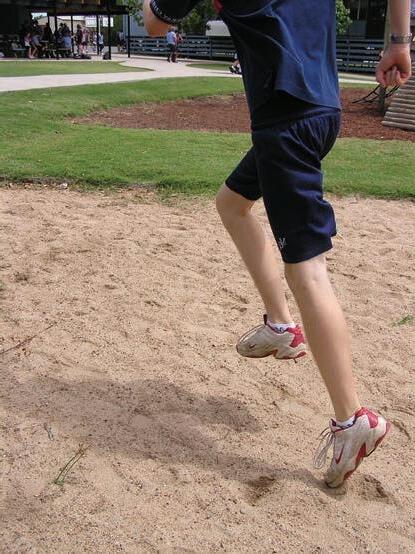
The L’RACE Curriculum Framework is the map for the learning journey. The L’RACE Pedagogy is the way that the teacher trains students for success on the journey. The CLEAR values are the way we treat each other as we travel together.
Rearrange the CLEAR values acronym and you have L’RACE. Using the CLEAR values and the biblical metaphor of a race from Hebrews 12, the staff at Mackay Christian College developed the L’RACE Pedagogy Principles. The L’RACE acronym is an easy way to help us remember and discuss key principles of pedagogy, and improve the quality and consistency of teaching within our school.
How we teach, teaches students a great deal about Christian values. Through planned challenging curriculum, students can learn the cognitive skills of moral reasoning using values. The warm, trusting relationships formed with teachers and the values that are modeled in every part of their teaching are another part of the essential ingredients for values learning. Brian Hill defines moral maturity as “not seen so much as cognitive expertness as a capacity for personal respect and responsiveness.” (1971, p. 63) The L’Race planning framework helps teachers bring students to a place of moral maturity with its emphasis on cognitive expertness. The L’Race pedagogy uses the same values to help teachers model and build relationships based on values through their daily teaching behaviour.
The L’Race pedagogy is based on the following principles from Hebrews 12
You may like to read more about creating a values-based culture and vision, or the L’race Purposeful Pedagogy in the other coaching manuals in this series. The values based curriculum planning model that is outlined in this coaching manual can be used independently of the other elements of Mackay Christian College’s values approach.
Inspiration from Hebrews 12 dimension
Since we are surrounded by such a great cloud of witnesses (v 1)
Submit to the Father of our spirits and live! (v 9)
Let us run with the perseverance the race marked out for us (vs 1)
Let us fix our eyes on Jesus (v 2)
Strengthen your feeble arms and weak knees. Make level paths for your feet so that the lame may not be disabled but rather healed. (vs 12-13)
Further reading: Mackay Christian College. (2005) L’Race; Teaching for Learning for Life. A Values Based Pedagogy.
Halstead, J. M., Taylor, M. J., (2000) Learning and Teaching about Values: a review of recent research. Cambridge Journal of Education., 30: 2.
Hill, Brian. V., (1971) Called to Teach. The Christian Presence in Australian Education. Sydney: Angus & Robertson.
Leo, Graham. (2005) Sex, God and Gardening. National Policy Forum, Canberra. www.csa.edu.au
This coaching manual is designed to help you plan a Christian values based curriculum. At Mackay Christian College we have developed tools to help teachers, and in the following sections, each part of the curriculum planning process will be explained and illustrated by examples of curriculum plans written by our staff. For those readers who like to know the big picture, a diagram of how all of the parts fit together has been put on the next page just for you.
The work that you see in this book has been developed by teachers at Mackay Christian College for their classes. It can be very daunting submitting your work to the critical scrutiny of others, but our desire is to bless other Christian teachers with ideas that can be adapted and adopted to plan excellent curriculum to the glory of God.

The L’Race Curriculum Framework is outlined in the following diagram.



SOURCE DOCUMENTS Such as Authority Approved Syllabuses or National Training Modules Through the filters of -
Christlikeness, Learning, Excellence, Attitude, and Respect
Christian Pedagogy Embedded in the school culture
Assessment and Reporting to parents and students


the
Mapping the Learning Journey
Christian schools partner with parents in giving children the learning they need to start their life journey. Schools really need to have a good idea about where students are going. The learning journey starts with the end in mind, and teachers need to be the map makers as they plan curriculum that will take students to where they need to go. It takes more than one map, and the teacher has some more roles to add to their job description!
Curriculum planning starts with global curriculum perspective.
Teachers are Ambassadors who can answer, “What is it that is essential for children in this earthly kingdom to learn?”
They have a Vision of a Learner that aids in selecting source documents or syllabii and resources that will build learning experiences and outcomes towards accomplishing the key exit outcomes embodied in the Vision of a Learner. Then...Interpreting the syllabus into a work program is the next step. A work program is the individual school’s interpretation of the source document, which teachers will use each year to plan from.

Teachers are the tour leaders who can say, “Trust me, there is a place up ahead that will amaze you. If we stay together, no one will get lost.” They can also answer the question, “Are we there yet?”
The L’Race Unit Planner and L’Race Lesson Planner helps teachers plan the learning sequence and the delivery strategies in a way that models the values and pedagogy the school upholds, in the L’Race Purposeful Pedagogy L’Race Assessment Principles are used to plan for quality assessment.

Teachers are the travel agents who can answer, “Where is the best place to go, how will I get there and what should I be doing?”
The Christian World View matrix gives teachers a useful developmental guide to biblical understanding. This is integrated into planning across the curriculum using the Work program page with “Can I?” questions. Then...each year, the teacher interprets the work program into unit plans, with lesson sequencing and planned assessment. It will change each year, as the needs of the students in the class change.



?
How would you explain to a parent that only Bible based teaching can adequately prepare every child for their individual life long learning journey?
We need to know what to sow in order to grow.
To be purposeful in our teaching, we need to be clear about what it is we want our students to achieve. What intellectual performances and attributes are going to be important for our students’ success in the world of the future? What qualities of Christian character should be evident in the adult life of a student educated in our school? What do our CLEAR values look like if they are being lived out? Inspired by the work of Bill Spady, Peter Senge, and Daniel Goleman, we used the CLEAR values to create our Vision of a Learner.
What types of experiences need to be provided to allow students to demonstrate these attributes?
This Vision of a Learner directly affects a teacher’s choice of curriculum and also the pedagogy, or way that the curriculum is being delivered. You can’t expect to create empathetic servant leaders unless you give students opportunities to be leaders, experience the failures and successes that will build empathy, and create opportunities for them to serve others. Investigators and problem solvers need more than a drill and skill curriculum. It is hard to keep these global goals in mind in the day to day planning. This is why they are a feature of the work program and unit planning proformas in this coaching manual.
If it is on the map we use to navigate our way forward, then we will be sure to help the students arrive there!
In our post-modern world of continual change, we need to prepare our students with the skills and confidence to be
Learning how to respond and shape the world around us for His Kingdom.
Relationship ATTITUDE Affirming Individuals
CHRISTLIKENESS Clear Vision and Goals
EXCELLENCE
Learning how to communicate in a way that values others,
Learning to understand who we are in God.
Learning how to be a servant.
ive a Christian
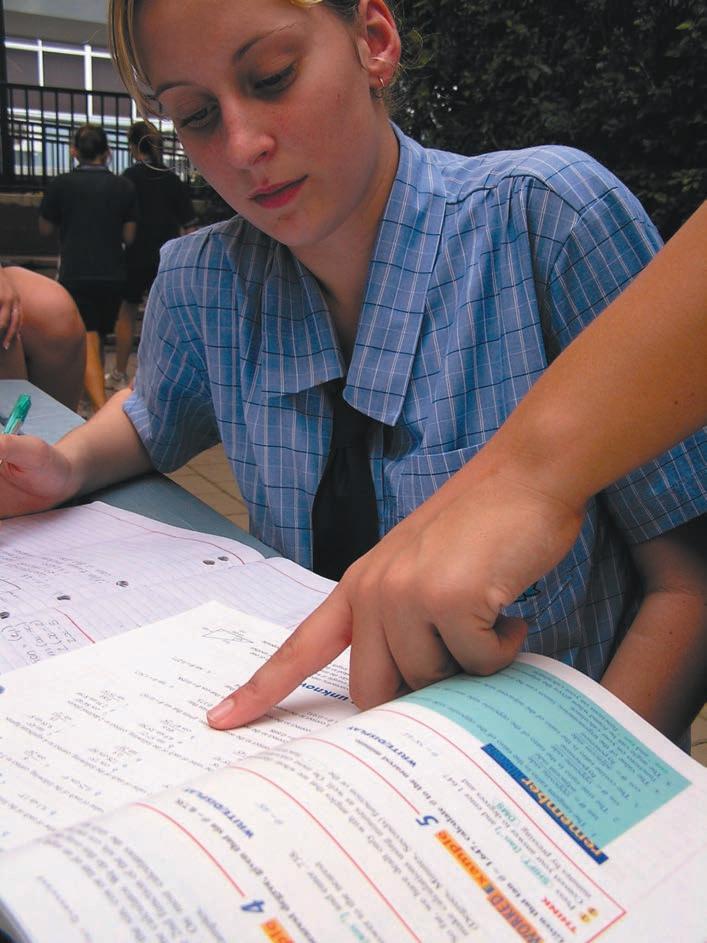
Responsive Communicators
Creative, reflective, investigators Empathetic servant leaders
Embracing Challenge
Learning how to live a Christian life in a non Christian world. LEARNING Leadership in Learning RESPECT
Self Directed Strategic Producers
Ephesians 4 vs 28
Work doing something useful with your hands that you may have something to share with those in need.
Self directed – Students are active and life long learners who initiate and self manage tasks.
Strategic – Students think of several possibilities for a course of action, and then choose the most appropriate according to the requirements of the task.
Producers – Students contribute to their world in positive ways by creating new ideas, products and services. They are not merely passive consumers.
Responsive Communicators
1 Peter 3 vs 15
But in your hearts set apart Christ as Lord. Always be prepared to give an answer to everyone who asks you to give the reason for the hope that you have. But do this with gentleness and respect.
Responsive – Students volunteer, anticipate, and contribute when they see an opportunity or a need. Communicators – Students can share their ideas in written and oral format in a way that respects others and builds right relationship.
Creative, Reflective Investigators
Ephesians 2 v 10
We are God’s workmanship, created in Christ Jesus to do good works which God prepared in advance for us to do.
Creative – Students can think and work in abstract, new and innovative ways.
Reflective – Students can evaluate their work and their thinking and appreciate their God given uniqueness.
Investigators – Students research and experiment to find new ways of thinking and doing.
Empathetic Servant Leaders
Matthew 20 v 26
Whoever wants to great among you must be your servant…just as the Son of Man did not come to be served, but to serve and give His life as a ransom for many.
Empathetic – Students appreciate and understand another person’s point of view
Servant – Students seek to meet the needs of the people around them.
Leaders – Students stand up for what they believe in, initiate change and influence others.
Resilient Problem Solvers
Romans 5 vs 2-4
We rejoice in the hope of the glory of God. Not only so, but we also rejoice in our sufferings, because we know that suffering produces perseverance; perseverance, character; and character, hope.
Resilient – Students persevere with courage under difficulties.
Problem solvers – students look for solutions that will provide hope.

school, or are they evident in other stages of a life long learning journey?
What vision of a learner do you have for your students?
Louis’ grey hair was in jeopardy. He didn’t have much left, and the way he was running his hands through it while he read through the papers on his desk worried Michael.
“In the interests of keeping what is left of your hair, why don’t you tell me what is bothering you mate?”
Michael dropped his books on his table in the staffroom and joined Louis at his desk.
“I am having trouble with these state syllabus documents. We are required to teach students about evolutionary science, indigenous spirituality, and radical feminist discourse analysis. I don’t think that this is will teach students to honour God.”
“But this is great!” Michael enthused. Louis stared at his teaching colleague.
“What better way to teach our students to be creative, reflective investigators, than examine contemporary issues for their world view?
You could plan so many exciting activities that will really empower students to think. If you throw in a persuasive oral presentation as their assessment, then you will also be achieving the Vision of a Learner for them to become responsive communicators.”
Louis still looked a bit worried. “I don’t know if I have the time to plan something like that.”
Michael was not daunted. “Let’s get out the Christian World View Matrix and those other L’Race planning tools.
Sure it will take a little while to write the work program, but two heads are better than one and now is exactly the time to get these students thinking through their beliefs in God.”
Mapping out a school work program from a source document.
We can teach about God like we teach about any other topic, but this is a form of dualism evident in our modern society that reserves God for Sundays and special occasions.
Our God is a part of every day life and the way we teach about Him should encourage this kind of thinking in our students.
“For the word of God is living and active. Sharper than any double-edged sword, it penetrates even to dividing soul and spirit, joints and marrow; it judges the thoughts and attitudes of the heart.
Hebrews 4 vs12
A foundational belief of the L’Race curriculum planning process is that the Bible is the revealed word of God given to us as the source of truth and basis of all knowledge and understanding. We should teach students using the Bible and biblical truths at every opportunity through memory verses and songs, stories and devotions, character studies and personal conversations.
We rejoice that God gives Christian teachers guidance through the Holy Spirit and unexpected opportunities to disciple the students in our care in wonderful ways.
We expect God to work through us in the classroom, and Christian teachers rely on His daily guidance. However, we have been called to do more than wait for those “aha” moments of God’s grace and “teach what is in accord with sound doctrine” Titus 2 vs 1. We need to teach our students to love God’s word, and be proficient soldiers of the Word, who
The Christian World View Matrix is a mapping tool that helps teachers make sure that a Christian world view comes through ALL curriculum.
A theophany is one way in which God disclosed or revealed Himself to his people. Theophanies are those divine supernatural appearances of God that occur throughout the Bible.
God imparts knowledge through revelation.
For example, one of the classic theophanies recorded in the Bible was the theophany in Exodus 3 and 4 where Moses encounters Yahweh through the burning bush. There are many definitions of what a theophany is but a relatively basic definition describes them as “a manifestation of God to man either in human or symbolic form in order to impart God’s will to that person”. Through the medium of theophanies God imparted knowledge to the human recipients of those theophanies. One of the theophanic functions was clearly the impartation of knowledge through the divine revelation of God.
As Christian Educators, we can become “particular channels of God’s grace”…
Taking the already cited example of Moses’ encounter with Yahweh on the mountain of God we can observe how knowledge was imparted to Moses through God’s self revelation. God imparted to Moses knowledge about His own nature and holiness. God imparted to Moses knowledge regarding the special status of the nation of Israel and knowledge about His desire to see the Israelites set from their slavery in Egypt. God also imparted knowledge to Moses about how he would be used to accomplish the salvation and deliverance of the Jewish people.
As Christian educators, we can become “particular channels of God’s grace” as we allow Him to impart knowledge through us to the young people He has entrusted to our care.

(Glen Cochrane is currently the Queensland State Executive Officer for Christian Schools Australia)
YEAR 7 Explore how obedience to Christ impacts relationships with others.
Evaluate the way Christlike thoughts affect their words and actions.
YEAR 6
Demonstrate an understanding of how relationship structure has been demonstrated to them through God. Eph. 5:1-2, 25-6:9; 1 Tim. 5:3
YEAR 5 Develop a personal profi le of spiritual strengths and weaknesses. Lordship of Christ by the authority of Christ, aim to serve the body of Christ better 1Thes 5:12-13
YEAR 4 Explain the cause & effects of obeying and disobeying God. 1Sam 15:22; Eph 6:1-3; Deut 28
Apply principles of Christlikeness to show how they can assist and understand others better when their thinking becomes more like Christ’s thinking. Matt. 5:21-47
Refl ect on personal & spiritual issues in a personal journal how the mind of Christ looks at our heart rather than our outward actions / appearances. Eccl 12:13
Describe cause & effect of thoughts & behaviours from thinking on –ve & +ve things Phil 4:4-8; Phil 2:5; Rom 12:2
Recognise their responsibility to study God’s Word for themselves.
Explore the concept that communication and responses to people improves with increased time spent in God’s Word and presence. Deut. 10:16-17
Develop the skill to use the Word of God as a researchable, infallible document. Prov 1:1-9
Evaluate the impact of Godly culture on the community. Recognise honorable aims by evaluating consequences to demonstrate the need to sow carefully and reap appropriate outcomes. Compare the kingdom of darkness and the kingdom of light to remain well informed of eternal entities. Pray for the nation. 2 Chron 6:39, Isaiah 56:7
Identify how personal salvation affects relationships within families. Rom. 12:17-21
Demonstrate an understanding of the principle -‘Saved by Grace’ through visual advertisement production John 3:16
Describe how God’s commandments are relevant today. Psalm 119; Ex 20; John 13:34 Explain the process of Christian growth in communicating an understanding of Salvation terms. Eph 2:8; John 3:16; Rom 3:23
Collect and analyse date to demonstrate how actions and responses towards other s changes with increased understanding of who they are in Christ. Eph. 1:5
Organize information about the causes and effects of living a Righteous life and how the cleansing nature of God’s word enables a fuller life experience. 1Pet 1:15-16; 1John 2:6
Recommend ways to apply Fruits of the Spirit as a solution to a problem in our lives Gal 5:22; John 15:8
Recommend ways to pray with thanks and joy. Eph. 1:16, Phil. 1:4
Understand the importance of giving up something of themselves for the betterment of the community and gain of others. Identify and demonstrate a variety of ways to express personal praise and worship that displays a relationship with their Creator. Evaluate standards of behaviour when considering the needs of others before individuals. Demonstrate communication skills in sharing the Gospel of Jesus Christ with others by showing compassion and not judgement.
Explain the value of confi dence and dependence In God when deciding about giving attitudes towards others. Matt. 10:18; 2 Cor. 8:7-8
Describe the value and impact of praising and worshipping God in witnessing a Christian lifestyle to family members. Deut. 12:12, 18
Develop ways to promote their own growth and development in Spiritual Warfare. Eph 6 Exmaine how Jesus taught us to pray. Luke. 11 Identify personal acts of giving within the community, which have formed our current life style. Matt 27 Identify features of personal praise and worship of God and how this action causes us to grow in respect for ourselves. Eph 4:32
Explore verbal & nonverbal responses in spiritual warfare eg. Praise/worship, prayer. Prov 23:7; 18:21; 15:1Eph 6:10-20; Job; Lk 6:28. God listens to prayer Psalm. 66
Describe ways in which we can give to God eg. Tithing, talents, time, lives. Mal 3:10-12; Lk 6:38
Demonstrate gratefulness towards God by showing respect in prayer time & praise & worship. Eph 5:19; Lk 19:40; Ps 98:4-6; 100:1; 150; 149:3; Neh 8:10; 1Sam 16:7
Explain the concept of parts of the body of Christ (forming one body) and how it affects self-value and treatment of self and others, especially family members. Rom. 12:4-5; 1 Cor. 12:12
Explain infl uences on the way people value & treat themselves & others. 1 Cor 13-4-8
Identify the talents of classmates in a positive, encouraging way. Explain how these valued in the body of Christ in different situations Matt 25:14-30; 1Cor 12:8-11
Explore expectations that sharing God’s Gospel starts in the family and grows from there. Matt. 28:18-20; Mark 3:21; 2 Tim. 1:5
Infer about how we should live when we are Fishers of men that shows our lives are a witness to others. Col 3:23
Design ways of sharing about Jesus with my neighbours, including lifestyle & friendship evangelism. Mark 16:15; Mt 28:18-20; Acts 1:8
YEAR 3
Demonstrate respectful living skills that value God’s authoritative structures in the community Rom. 13:1
YEAR 2 Make connections that obedience to God is as important as obedience to parents. Ex. 20: 12; Eph. 6:1-3
YEAR 1 Compare ideas and feelings of how allowing Christ to be Lord affects how they relate to God. John 14:6
Demonstrate the mind of Christ by relating and functioning in the community as God intended. Rom. 12:2; 1 Cor. 2:16
Identify the mind of Christ and how they should behave in the same manner to their families. Col. 3:23
Match the relationship that as they spend time with God, He helps put on the mind of Christ. Eph. 6:10
PRE Express the understanding that God wants them to live His way. Share the belief that they need to let Jesus be the boss of their heart (life). Discuss how through spending time with God, they become more like Jesus.1 John; Phil. 4:8
LIdentify the Word of God as the source of instruction on their role in the community. Heb. 4:1
Share an understanding of how God communicates to them and how they communicate with their family. Matt. 15:18
Describe and share an understanding that the Word of God is God’s letter to them. Ps. 119:105
Communicate the understanding that in the Bible, God tells us how He wants them to live.
Demonstrate God’s love and forgiveness by loving and forgiving those around them. John 3:16; Eph. 4:32 Study the fruits of the Spirit and display Godly behaviour to those around them. Gal. 5:22
Describe how God loves them and forgives them and how they should love and forgive others in their family. John 3:16; Matt. 6:12; Eph. 6:1-3
Identify and describe the fruits of the Spirit and how they can put it into school and at home. Gal. 5:22-23
Share an understanding that Christ died so that they may have a relationship with God. John 3:16 Make the connection between having Christ as an example and living a righteous life with His help. Col. 3:23
Understand that Satan’s aim is to destroy and learn how to fi ght effectively. Eph. 6; John 10:10; Isa. 54:16; Rom. 8:37 Examine prayer as powerful. Understand that by giving to God and others, they will experience God’s blessing. Gal. 6:7
Identify and describe the battle between good and evil that exists in their family and what they could do about it. Eph. 6:10; Matt. 6:13; 2 Tim. 1:7, 2:3 Pray for family John. 17:15
Explain and demonstrate how God uses them as a soldier for Him. 2 Tim. 2:3 Pray for others and with praise. Eph. 1:16 Isaiah. 63:7
Develop a thankful and joyful heart towards God resulting in appropriately responding to those in the community. Ps. 100; 150 Use their talents, skills, gifts, and abilities in the community and recognise their importance in the body of Christ. 1 Cor. 12:1
Identify, gather and record what God had given to them so they can be givers too, both at school and at home. Compare ideas and feelings of how they can respond to God thankfully and joyfully and to their family also. Make connections between being a member of God’s family and their own family.
Discuss strategies that show because God gave to them, they can give everything to Him. Col. 3:23
Identify and demonstrate that all their praise and worship belong to God. Phil. 4:4; Ps. 138:1 Use their personal abilities and limitations that God has given them to participate in the Body of Christ. Rom. 12:4-5
Display God’s love in word and deed to those around them and become fi shers of men. Matt. 28:19-20
Describe how God’s love can be shared with their family.
Demonstrate ways God wants them to draw others to Him. Mark 16:15
RDescribe that Jesus died so they can be in God’s family. John 3:16
Share the understanding that God wants them to be in His family. Acts 16:31
Express an understanding that Jesus shows them how to live in God’s way. Eph. 4:32 Copy the way Jesus acted towards other people. Participate in praying for themselves and others. Express an understanding that they can talk to God about everything. Express the connection that God gave His Son for them so they give Him their life. 2 Cor. 5:15; Matt. 6:12
Participate in praise and worship to show God they love Him. Express the understanding that God loves to hear their praise and worship.
Express an understanding of the variety of people in God’s family. Discuss the different jobs God has for everyone. Tell others about Jesus. Matt. 28:19 Retell the story of Jesus’ death, burial and resurrection. Matt. 4:19
12
YEAR
Apply an understanding of the Lordship of Christ to seek ways of reaching the world with the gospel. Phil 2:5-7
Demonstrate effective communication skills in spreading the message of salvation throughout the world. Acts 1:8
Make practical suggestions of how the word of God can be made available to all nations. Heb 4:12
Demonstrate the mind of Christ by showing empathy with people of other nations / cultures. Rom 12:16-21
Make clear links between the values and proposed actions of a righteous life enabling God to use us to reach people of other nations. Mt 5:10
Advocate the infl uence of God’s armour and weapons to oppose evil forces in the world. Eph 6:12. Discuss the implications for prayer of James 5:16 and how someone can be a righteous man. Make practical suggestions of supporting and giving to the needs of worldwide ministry. 2 Cor 9:7
Demonstrate communication and cooperation skills, use praise and intercession on behalf of peoples of the whole world. Heb 13:15 Identify inter-relationships between members of the body of Christ throughout the world. 1Cor 12:12; Eph 3:14-21
Demonstrate effective communication skills and cooperative skills to evangelise people in other countries. Mt 28:28
YEAR 11
Sharing practical suggestions on the Lordship of Christ throughout Australia. Is 60:16b; Mt 28:7-11; Ps 24
Develop a strategy for communicating the message of salvation in Australia. Mt 28:18-20; Acts 1:8
Evaluate evidence of how knowledge of God’s word assists us in reaching Australians in need. 2 Tim 3:16-17
Make clear links between understanding the mind of Christ and leading a consistent Christian life. Jam 1:19-20; Phil 4:4
List ways in which we can live a righteous life as an example to others. Gal 5:19-23; Rev 2:23b
Suggest ways of using God’s armour and weapons to oppose evil forces in Australia. 1Pet 5:8; 1Cor 14:8; Eph 6:10-18, Jer 46:3-5; James 4:7.
Examine a humble attitude in prayer.
Analyse ways of supporting the needs of ministry within Australia. Mk 10:43-45; 2Cor 9:6-8
Collaboratively develop a strategy for celebrating an attitude of praise and intercession on behalf of fellow Australians. Rom 8:26; Num 21:7
Identify aspects of the body of Christ in Australia on an ecumenical level. Rom 11:11-24; 1Cor 12:1-4,12-13
Create proposals to develop strategies for evangelising fellow Australia. John 3:17; Mt 4:19
YEAR 10
Make clear links between values and proposed actions, showing all authority in our world has been given to Christ Mt 28:18; Rom 13:1
Communicate an informed revelation that God desires that none in the world should perish but have eternal life. John 3:15-16
Produce a corroborated argument, that Gods word is divinely inspired and infallible and for all nationalities. 2Tim 3:16-17; Mt 28:19-20
Demonstrate communication skills in studying God’s word to renew our minds daily and so develop Christ’s perspective of the world. Rom 12:2
Develop criteria based judgements to enable us to present their bodies as living sacrifi ces holy and acceptable to Christ. Rom 12:1
Initiate and undertake steps to equip and stand with other members of God’s family to oppose the evil one. Eph 1 Discuss fasting, petition (Dan 9:3) and constancy in prayer. Acts. 1:14
Propose actions to enhance our own and others’ development through receiving Gods grace, so we can freely give to others in a world conduct. Mt 10:8
Initiate and undertake steps to acknowledge how all Gods creation refl ects His glory and he is worthy of praise. Rev 4:11
Create proposals to resolve issues that will keep the unity of faith within Christ’s body worldwide. Psalm 133:1
Make practical suggestions of how we can spread the gospel to all mankind and seeking His help. Mk 16:15-16
YEAR 9
Identify values that refl ect an obedience to God’s will in our actions as Australian citizens. Identify priorities that refl ect the mind of Christ in agreement with God’s word.
Demonstrate how studying God’s word can help us make Godly decisions concerning our country. Design strategies to enact God’s grace to infl uence our country. 2 Chronicles 7:11-22
Analyse aspects of how a righteous life impacts in service for our country. Students will discuss what it means to pray in the Spirit, Eph 6:12,18 and give God your troubles. Phil. 4:6, James 5:13
Justify the perception of giving as: 1. An attitude 2. Sowing seeds Share sense of belonging through appreciating variety of worship forms in the Christian Church in Australia. Synthesize their role in the body of Christ (church) in Australia or the wider community. Represent knowledge of evangelism in Australia from a historical perspective to the present.
YEAR 8
Recognise and describe how their relationship to Christ is expressed in the way they commit themselves to serving one another Phil 2:3-11; Matt 7:12
Express how having the mind of Christ gives us an understanding of how to relate and function in the church as God intended. 1Pet 1:15-16; Gal 5:22-23; 1Cor 12:12-31
Discuss and evaluate how the Word of God deepens our relationship with God and others. 2 Tim 2:15; Ps 78; 1-8
Communicate how personal salvation affects relationships within the Church. Eph 4:32
Describe changes that the nature and character of God brings to our behaviour 1John 2:6; 1 Cor 13:4-7
Identify inherent values of unifi cation in heart and purpose as most effective for the advancement of the gospel. Ecc 12:13; 1Cor 13:4-8 Pray without disputes. 1 Tim. 2:8, and with faith. James 5:15
RDevelop strategies to manage and infl uence the Church’s power to change lives and impact the wider community. Matt 5,6,7; Prov 22:6
Enact a thankful and joyful heart towards God through corporate worship. Ps 34; Phil 4:4
Express how gifts and talents can be used in the Lord’s service. 1Cor 12:12-31; Matt 25:14
Evaluate the infl uence of God’s love and how it strengthens the Body of Christ for greater service to the Kingdom. James 2:14-26
A work program should have at least the following information:
Your school profile – the mission, philosophy, size, timetable and physical resources affect your choices in curriculum.
Your rationale for teaching the topics – From all the choices in the world, why have you chosen this source document and this topic to teach in your Christian school. The key concepts or organisation of the learning will feature here, and may be drawn from the source document but written from a Christian World View. Statements of importance such as the Vision of a Learner, approaches to language or equity may feature here also.
Course overview – How the course is to be organised, including a time and major topic allocation is often expressed in a table format.
Units of study – The key learning outcomes or objectives and experiences are outlined in enough detail to allow a new teacher to plan work. There are many formats that can be used. The format of the work program page with “Can I?” questions given as an example in the following pages directs a teacher to think about christian world view integration and use the Christian World View Matrix.
Assessment principles and plan – This will include a plan for how a teacher will make judgements on the quality of student learning, and record and report these to parents.
Most importantly, the work program is a document for teachers to use, so its look and feel should be teacher friendly.
Using the Christian World View Matrix for the first time is often daunting for teachers. It might help to have a look at some of the examples from the staff at Mackay Christian College. We have used the Queensland Government Key Learning Area Outcomes syllabus documents as our source documents. You will identify the Christian World View outcomes by their code (CWV).

Resources – useful templates, lists of resources, examples are included here for teacher reference.
The writing of a work program is a significant body of work! These documents should be available to parents, can be shared with other schools and are often required in official accreditation or registration processes. Government accreditation requirements may influence how a work program may look, or even what is taught. A Christian World View integration may be questioned. Using a tool such as the matrix enables a school to demonstrate the integrity of a planned and knowledge based approach.
Why do you think the statements of outcomes in the work program have been unpacked and written as “Can I?” questions?
TIME: 6 WEEKS
YEAR LEVEL: 8
UNIT: 8.2 Is there anything new under the sun?
SUBJECT: Study of Society and Environment
OUTCOME LEVEL: 4/5
CHRISTIAN WORLD VIEW: Many modern concepts, traditions and practices fi nd their origins in ancient societies. By studying ancient societies students are able to glean an understanding of international boundaries, cultures and norms greatly enriching their sense of place and space and change over time. Students will be encouraged to compare and contrast the values of various ancient societies and make value judgments based on a Christian World View.
EVALUATING Can I select aspects of ancient cultures that have found their way into Australian identity?
Can I list a personal code of ethics to help me deal in an understanding way with people from different cultural perceptions?
Can I identify any more behaviours to add to my personal code of behaviour, based on this story?
SYNTHESIZING
Can I perform the role of an archaeologist and identify the similar aspects of ancient cultures to that of the present?
Can I explain how different perceptions and ethics can cause cultural clashes?
Can I explain in this story how God in his Love used this clash of cultures to change lives and increase His church’s infl uence?
ENHANCING
Can I compare and contrast 2 ancient cultures (Egyptian, Hebrew, Chinese, Greek, Roman) and list specifi c aspects that are similar?
Can I represent a conversation between two ancient people from each of my chosen cultures discussing one of these topics?
Can I identify in the story how the government caused change to particular groups, and how God’s people responded?
ORIENTATING
Can I use a notetaking system to research and describe 2 ancient cultures? (eg (Egyptian, Hebrew, Chinese, Greek, Roman)
Can I list the cultural attributes of my 2 chosen cultures, including attitudes and ethics towards death, war, art, religion and gender?
Can I locate a bible story showing a clash between God’s people and an ancient Godless culture? (eg Babylonian, Persian, Egyptian, Greek)
OUTCOMES
CI 5.1
Students investigate aspects of diverse cultural groups, including Aboriginal or Torres Strait Islander groups, and how others perceive these aspects.
CI 4.2 Students design an ethical code of personal behaviour based on their perceptions of cultural groups.
CI 5.4 Students describe how governments have caused changes to particular groups. CWV 8.10 Students develop strategies to manage and infl uence the Church’s power to change lives and impact the wider community.
Assessment: Research Project. As a culmination of all class notetaking and guided research and refl ection. Students should demonstrate skills in comparing and contrasting, and use of research skills.
“Can I explain how different perceptions and ethics can cause cultural clashes”could be taught by one teacher as a response to a video presentation, by another through historical document study, another teacher could ask students to role play a situation, yet another might ask students to draw a cartoon, make a chart or powerpoint display, yet another would set an essay. The unit plan is where the teacher makes the selection of learning activity that will best suit that group of learners.
What is the difference between this page and a unit plan? A: There would be many different ways that teachers could interpret this work program page.
TIME: 6 WEEKS
YEAR LEVEL: 9
Staying safe using small engines and machines
UNIT: 9.2
SUBJECT: Agriculture
OUTCOME LEVEL: 4/5
CHRISTIAN WORLD VIEW: Agricultural practices involve a variety of hazards. Students in this and every unit, learn to identify common agriculture dangers, and risk management behaviours. Students will also learn specifi c Workplace Health and Safety standards and practices, as they learn the safe operation of small engines and tools. Safe practices are presented within a Christian World View as respect for self, an attitude of valuing others, and respecting the property of others.
RESOURCES
EVALUATING
Can I plan good responses when I observe unsafe practices?
SYNTHESIZING
Can I describe the risks and demonstrate safe behaviours when operating a chosen small engine or tool?
ENHANCING
Can I classify types of risks in common agricultural dangers?
ORIENTATING
Can I identify common agricultural dangers?
OUTCOMES
Can I instruct someone else in the safe operation of the chosen tool?
Can I demonstrate the operation of the chosen small engine, and procedures for maintenance?
Can I recall Workplace Health and Safety regulations that apply to activities in the Agriculture section? Can I explain the principles of small engines, including water and air cooling systems, lubrication principles, carburettor and injection fuel systems, alternators and batteries?
Can I identify small engines and their probable uses in agricultural settings?
MC 4.4 Students propose ways of responding to situations and behaviours that are unsafe, harmful or risky after assessing options and consequences. MC 5.4 Students demonstrate behaviours and actions to provide care or manage risk in responding to unsafe or risky situations and behaviours.
Can I read and retell the safety manual of a chosen small engine?
MC 4.1 Students explain the principles of engines used in agriculture enterprises. MC 5.1 Students demonstrate the operation of engines and procedures for engine maintenance.
Culminating Assessment (s): Oral assessmentdemonstration OBSmall group sharing
Can I demonstrate care and respect for school property?
Can I explain how safe practices show respect for self and others?
CWV 9.9 Students synthesize their role in the body of Christ in Australia or the wider community.
LINKS: HPE PH 4.3, 5.3
How is the way that the Christian World View outcome used in this Agricultural machinery unit different to the way a Christian World View Outcome is used in the other examples?
A: In other examples, teachers may choose to interpret the Christian World View Outcome as an opportunity to teach a knowledge concept about God. In this case, the teacher has chosen to teach a behavioural concept. Both are acceptable and it depends on the context of the work unit which approach would be chosen.
?
Fehring Mrs M Van Essen
AUTHORS: Mrs J
THEME: UNIT #2From Farm, Factory and Sea (Food production)
Gen1:26
LEVEL: 1/2
CHRISTIAN WORLD VIEW: God meets our needs by helping man to establish goods & services. God has placed man in charge of caring for his cr eation.
Can I connect that obeying God is as important as obeying my parents and teachers? Can I explain how I can be a good caretaker of God’s creation? Can I show an appreciation for the many different people who help bring food to our table? Can I show my gratitude to God by being a giver too?
Can I retell how God has rescued us from the consequences of disobedience? Can I explain that God still meets our needs, and wants us to obey him as we take care of his creation?
Can I create a representation of the people and resources involved in producing food for our table?… Can I explain that God provides people with talents and resources because He loves us?
Can I make the connection between the importance of obedience to God and consequences of sin using the story of the Adam and Eve? Can I recall the way a farm and a factory operate? Can I describe how a supermarket works? Can I explain that it is God who supplies all my daily needs, He is in control?
Can I retell the story of Adam and Eve in the garden, noting that God made all the animals and plants to meet their needs, and people as caretakers?
Can I classify the sources of familiar food? Can I list all my favourite foods, and understand that God is the one who gave them to me? Can I sort the different types of people and occupations into farm, factory and sea categories being aware of stereotypes ?
Can I identify areas of need in my own life which impact my health and plan ways of changing this? (eg. diary/checklist) Can I contribute to people’s needs?
Can I design a poster illustrating the importance of healthy habits to encourage others to do likewise? Can I devise possible solutions to overcome these problems which can limit us?
Can I identify and role play the different actions that will promote better health? Can I identify possible problems people may have in accessing resources?
Can I list the different things that promote a healthy body and explain why it is important to care for my body? (Hey! It’s the temple of the Holy Spirit!) Can I explain that there are different types of farms?
continued on next page...
OUTCOMES
CWV 2.2 Make connections that obedience to God is as important as obedience to parents.
Students create a representation of the various people and resources involved in the production and consumption of familiar goods and services. Cwv 2.7 Identify, gather and record what God has given to them so that they can be givers too, both at school and at home.
SRP 2.1
SRP 1.2 Students create representations that identify and challenge stereotypes about work roles.
Health-factors influencing and actions to promote.
PHIC 2.1
Students describe and demonstrate actions they can take to promote the different dimensions of the health of themselves and others.
SRP 2.5 Students devise possible solutions to problems people may have in accessing resources.
SRP 1.5 Students discuss strategies that assist them to manage limiting situations.
EVALUATING
Can I thank God for our daily bread and providing for us in all places that we live?
Can I make some bread?
Can I explain how people from different areas in Australia can access other areas for their needs?
ORIENTATING
Can I locate different types of farms and factories in Australia?
PS 2.1 Students identifi y how environments affect lifestyles around Australia. PS 1.1 Students match relationships between environmental conditions and people’s clothes, food, shelter, work and leisure.
Can I design a thankful sticker showing how thankful I am for my food? (eg. sticker on my lunchbox/ fridge.) Can I plan and prepare a balanced lunch for the mothers/aides that help in my classroom and explain why I have chosen certain foods.
Can I show my thankfulness by making a meal for my parents, preparing a prayer of thanks. Can I devise a useful checklist, so I keep a record of the foods I eat each day for a week. Can I list areas that need improvement/ change?
How can I show God that I’m thankful for the food He gives us (e.g. by not being wasteful, being thankful to Mum and Dad.)
Can I explain why a balanced diet is important to my health? Can I understand that what goes into my body has a direct effect upon my health and how I feel?
Can I listen to stories from the Bible, where God has given food to people in need? (eg. Elijah and the widow, feeding the 5000) Can I classify foods into different categories healthy and unhealthy ?
CWV 2.7 Compare ideas and feelings of how they can respond to God thankfully and joyfully and to their family also. Nutrition choices. PHIC 2.2 Students explain the benefi ts of eating a variety of nutritious foods and plan ways to increase the range of nutritious food in their diets.
Culminating Assessment(s): OB –Personal & teacher (Observations) WS –List & picture (Worksheets) ST –Project (for students)
LINKS: Maths –Language –Science
While this was listed as a SOSE (Study of Society and Environment) unit, how many key learning areas have been integrated in to this plan?
The first column:
The Key Learning Outcomes used in a syllabus are often written in very broad terms. Some teachers struggle to work out what they need to teach. The work program gives the detailed direction to the teacher. Using the table format above, the Key Learning Outcomes in the first column are “unpacked” into practical and observable learning moments.
The headings at the top of the columns: These headings prompt teachers when “unpacking” the outcomes to write the learning sequencing considering these questions;
Orientating: What prior knowledge do students already have? What anticipation can be created? What connection to their everyday world can I make? What sensory experience will lay a foundation of excitement and understanding that can be developed upon?
Enhancing: What new knowledge, understanding and skill do students need? How can I build on or correct earlier understandings and concepts? What key thinking and doing process do I need to teach to help students examine and understand these new thoughts thoroughly?
Synthesising: What new idea or work can students create from the many new concepts they have learned? How can students demonstrate that they have fully understood the new ideas learned?
Evaluating: What connections can students make between their new understanding and their personal world? How can students be guided to reflect on what they have learned, how they learned it or how well they have understood or performed? What actions can students take in response to their new learning?
Taken together, these represent a sequence of quality teaching, guiding a teacher out of the old habits of a “pour and store” method of transferring volumes of knowledge into the brains of students, but rather supports and active and reflective pedagogy.
These steps also help students to achieve our Vision of a Learner; during the enhancing phase, often being investigators and problem solvers, in the synthesising phase, being producers and creators, while in the evaluating phase, being reflective and responsive communicators, or empathetic servant leaders.
The Christian World View statement:
What explanation can a teacher give to children and parents about what can be learned about God by studying this topic? This statement is used in our school reporting process as a summary of the learning goals for the reporting period.
The outcome statements;
For our curriculum, we have chosen to use outcome statements as they are the developmental steps that lead a student towards the key exit outcomes described in our Vision of a Learner. The key verbs in each statement give a clue to the type of development. A teacher may address more than one outcome at a time, and often different levels of outcome may be listed in the same box to allow a teacher to differentiate between the types of learning demonstrations teachers may see during the learning experiences. Outcomes provide a map of the quantity of learning a student has journeyed through. They are also written in terms of outward observable learning behaviours that can be reliably observed by a teacher.
Not all schools will use outcomes, but may use objectives instead. These could easily be used in this work program template in a similar way.
“Should I stockpile some post it notes? Is there going to be a world shortage soon?”
Nicole gestured to the piles of library books with post it notes and the sticky yellow tags decorating the paper charts on the wall.
Karen laughed. “I just like to see the whole picture before Mal puts it on his computer. Planning a work program takes a lot of thought! Have you finished your new program for Speech and Drama?”
“It took me a while, but yes it is done. I am really noticing the difference with my classes too. They love the activities especially the ones based around the Fruits of the Spirit improvisations. How are you going with your Christian World View Outcomes?”
Karen groaned. “It took me a while to think which ones apply to Art, and then really think through how they can apply to the work units. Then God took me to some great bible verses, and it seemed to click ok.”
She stood and stretched. “I guess it is just as well that I am spending the time to think it through now. I would never have had the time to work it out while I am in the middle of teaching it. I am flat out finding the time to make sure all the paint palettes are rinsed and returned.”
Nicole gave her teaching partner a hug. “I can see why the kids love your art classes though.” She gestured to the note-filled charts and sticky post-it notes all over the wall. “Look at this wonderful work of art you are calling a work program!”
Have you had the pleasure of taking a class of students on an extended trip? It can be exciting and it can also be exhausting. Careful planning is essential, but you know that there will always be surprises along the way that will require last minute adjustments. In the classroom, the unit plan is the touring map that you will use for that particular group of children at that point in time. One year you may have a very quiet class full of bookworms who need help taking risks in learning. The next year, you may have a very active group of learners, with very diverse abilities. This may even describe the same class at different points in the one year. A unit plan is written with the uniqueness of the learners in mind. A teacher writes this plan immediately before a new unit of work is taught, and describes the learning activities that will allow students to fulfil the requirements of the work program.
The curriculum is both taught and caught.
The way that a teacher teaches a class, or the pedagogy, is part of what is learned in a classroom. In Titus 2 vs 7, we are told
“In everything set them an example by doing what is good. In your teaching show integrity.
”By using a common framework of values to organise the unit planning and the pedagogy practices in a classroom, there is alignment between what is taught and the way it is taught.
Teachers need to keep looking for those unexpected opportunities to affirm individuals, but they also need to plan for it too.
Instead of continually reacting to behavioural problems, teachers are encouraged to be proactive and plan to create right relationship and enjoyment as part of their unit planning. When teachers plan for an exciting learning journey, students have a wonderful adventure.
A unit plan should have at least the following information:
• Integrating theme/topic
• Christian focus
• Memory verses
• Contribution to vision of a learner
• Links to other subjects
• Learner attributes of the class that need consideration
• Thinking skills and co-operative learning strategies, curriculum outcomes or core objectives, including Knowledge, Thinking skills, Communication and Practical skills.
• Planned assessment opportunities
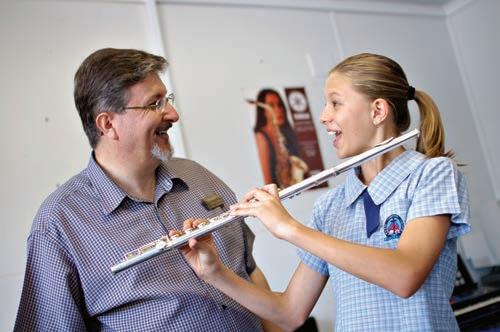
The following L’RACE unit planning format was designed to help teachers put these unit planning and all of the L’RACE pedagogy principles into practice.
A sample format for unit planning is included in the following pages.
A blank template is available in the Tookit at the back of this manual.
?Which of these elements are features in your current planning practice?
Time: 9 Weeks Integrating Theme/Topic: Da Capo –Students will revise the key elements of music by playing listening to and writing Pentatonic Music.
Contribution to Vision of a Learner: Systematic, Imaginative Designers and Implementers (through composition and performance), Self directed investigators (through self paced software) Knowledgeable complex problem solvers (applying music to Bible Passage)
Grade: 9 Music
Teacher: Mr Mills
eadership in Learning
L
Christian focus: 9.3 The mind of Christ. Demonstrate how studying God’s Word can help us make Godly decisions concerning our country. To know the mind of Christ, we must know his word, which can be learned by scripture memorization. The memory verse for this unit demonstrates the “Mind of Christ.”
Memory verse: Romans 8:1 “There is therefore now no condemnation for those who are in Christ Jesus, for the law of the Spirit of life in Christ Jesus has set me free from the Law of sin and death. ”
Clear Vision & Goals
Embracing Challenge
Developing “Independent” problem solvingApply Notation system to design a “New” composition eg. outcomes / core objectives
4.1 Orally and Visually analyse and respond to core content in music they hear and perform.
4.2 Sing and Play individually and with others in unison and in up to four parts, including some repertoire from memory.
4.3 Read and write short pieces of music containing core content.
9.3 Demonstrate how studying God’s word can help us make Godly decisions concerning our country.
Right relationship & enjoyment
Links to other subjects? English (Poetry / Rhyming Scheme), Multi Tech (Efolio / Audio Recording), Primary Classes (Memory Verses), Form (Memory Verses), CLS (Christian Life Skills) Affi
Demonstrating success through reviewing each others work
Celebrate achievement of each others goals
rming Individuals Eg. Learner attributes that need tobe considered
Pentaton Scale Drills (A)
Revise learned songs from “Grade 8” Music programIndividualised self paced lessons (Music Ace)
How to input music into “Notation Software”
Complete Unit 1 activities in “Exploring Music” workbooks
Play Rhythm Bingo
Sing for enjoyment / sing in groups up to 4 part Canon (A)
Sight playing exercises with advanced rhythms (limited pitch) (A)
Online video tutorials (improvising)
Play more advanced repertoire using Tabulated Score and Rote Learning
Enhancing Orientating
Analyse the Music Elements of Studied and Unstudied Repertoire.
As a group, perform a 2 part arrangement which includes Pentatonic ostinato, and Improvisation of answer phrases within the context of learned repertoire (A)
Compose “Scripture Memory Song” using verses from the “student diary” (A)
Complete “Game” activities in Music Ace / Auralia Tests
Export Original Song as a “Virtual Singer” fi le and publish to school web site.
Perform repertoire and/or Memory song to a Primary school Audience (A)
Record a performance of repertoire for self evaluation (P)
Design a criteria sheet for a good “Practical Performance”
Assess video of practical performance in terms of own criteria
Draft / Edit original Memory song in terms of Musical Contour (pitch)
Choose one of the two assessment pieces to be included in E Portfolio (P)
Evaluating Synthesizing
Which of these activities will be assessment opportunities? (A) links to portfolios? (P)
? How well do the planned learning activities refl ect the aims expressed in the grey boxes?
Many students have a different level of knowledge of the elements of Music: Use of Music Software which allows for tailored individualised program to fi ll in the gaps. (4.1 / 4.3)
Some students have not had the same level of exposure to guitar performance. Online Video Tutorials allow for students to work at their own pace on developing the guitar skills for “Key Repertoire.” (4.2)
Allow students with performance anxiety to record performance rather than Live. (include in portfolio) (4.2)
8 Home Economics
Grade:
Teacher: Mr Tysoe L eadership in Learning
Contribution to Vision of a Learner: Self directed strategic producer, Creative refl ective investigator, Resilient problem solvers
Christian focus: CWV 8.2 Recognise and describe how their relationship to Christ is expressed in the way they commit themselves to serving one another.
Links to other subjects? Community? HPE, Fashion, English & Art.
Memory verse: Philippians 2:3-4 Do nothing out of selfi sh ambition or vain conceit, but in humility consider others better than yourselves . Each of you should look not only to your own interests, but also the interests of others.
Clear Vision & Goals
• Understand textile types
• Complete and keep a useful item
• Be creative
• Recognise quality
• Solve problems through asking for help and relying on self
• Help and consider others
• Build confi dence in God, self and classmates
• Develop fi ner motor skills
Embracing
Key learning activities that link all L’RACE dimensions
Right relationship & enjoyment challenge Co-operation: Encourage each other, work with someone else
• Workplace Health and Safety: Need for good shoes, no horseplay, focus on work etc.
• Sewing machine operator’s license
• Textile theory: Sources, types etc. (P)
• Design elements: Process from beginning to completion of project
• Planning: Importance of knowing where you’re going
• Problem solving with equipment and mistakes (perseverance)
• Practical work: Sewing on theme pieces and doing appliqué (A)
BI 4.4
Students explain how characteristics of materials affect ways they can be manipulated. (Tech MAT 4.1)
• Recognising quality in their product
Students employ their own and others’ practical knowledge about equipment and techniques for manipulating and processing materials in order to enhance their products. (Tech MAT 4.2)
The design process: Developing a design that tells people about themselves eg. Outcomes / core objectives Evaluating Synthesizing Enhancing Orientating
BI 4.5
• Fashion and identity: How the two infl uence society
• Personal grooming: The importance at their age and any stage of life
Which of these activities will be assessment opportunities? (A) links to portfolios? (P)
Note the link from the work program page with the “can I?” questions.
rming Individuals eg. Learner attributes that need tobe considered
Affi
• Move around and encourage students before they ask.
• Get to know more about individuals eg. hobbies etc.
• Encourage students to partner and peer mentor.
? This page is just the unit cover page. The unit would then be fully developed like the following pages.
Resources… Thinking and planning ahead.
Learning experiences…
This is a cross check of student involvement…if it is listen, listen, listen, then better learning experiences needed.
Learning experiences… Step by step, the learning activities….
Topic... Taken from Work program Can I questions and first page of unit plan
• Workbooks
• Whiteboard & pens
• Sewing machines
• Practise materials
• Bobbins, thread etc.
• Workbooks
• Whiteboard & pens
• Design sheets
• Workbooks • Whiteboard & pens • Sewing machines
• Practise materials
• Bobbins, thread etc.
• Student pencil case & patch material
• Workbooks
• Whiteboard & pens
• Line up in 2 lines outside
• Suggest reasons for required WPHS
• Follow along in their workbook
• Watch & then do on their own machine
• Work independently unless requiring help
• Line up in 2 lines outside
• Participate in Q/A & write the answers in their book
• Write homework in diary
• Line up in 2 lines outside
• Show their design progress
• Thread top & bottom of the machine
• Begin zigzagging their pieces of material
• Check partner’s zigzag
• Go through classroom material to find items that suit their design
• Class entry routine -reinforce
• Run through WPHS & sewing risks
• Read requirements of machine operator’s certificate
• Demonstrate technique for filling a bobbin & threading a machine
• Demonstrate how to fit bobbin into case & then into machine
• Begin practise sewing exercise on supplied material
• Move around room & check student’s ability to complete tasks at hand
• Class entry routine –reinforce
• Begin theory component in work book (use discussion, question/answer)
• Hand out design sheet & get students to complete for homework (suggest they bring in items they can use as part of their design)
• Class entry routine –reinforce
• Check design process
• Get students to move to their machine & set it up ready to sew
• Randomly match students with account ability partners (draw names)
• Hand out fabric for the pencil case & remind them why there is 3 pieces
• Explain with a board drawing how & why to zigzag around the edges of the fabric (show sample piece)
• Use classroom fabric to begin cutting out design patches from
• Get students to check partner’s progress.
• Line up in 2 lines outside
• Participate in discussion & questions
• Listen & respect each other as they speak
• Workbooks
• Whiteboard & pens
• Sewing machines
• Practise materials
• Bobbins, thread etc.
• Student pencil case & patch material
continued on next page...
• Line up in 2 lines outside
• Select their partner from the draw • Check partners work
• Cut out patches & appliqué • Begin pinning on patches
• Begin sewing if ready • Check partners progress
• Pack up equipment & clean up floor
• Class entry routine –reinforce
• Continue with theory in workbooks (use discussion, Q&A process)
• Pair up students to take turns at answering questions
• Class entry routine –reinforce
• Randomly match students with accountability partners (draw names)
• Students check each other’s work at the beginning & end of the lesson to check progress & standard (quality)
• Students cut out patches etc to match their design
• Students pin on patches & prep for appliqué
• Get students to move to their machine & set it up ready to sew
Can I work safely in the sewing room?
Can I set the sewing machine up for sewing?
Can I change stitch patterns (straight, zigzag)?
Can I classify fabrics (natural, man made)?
Can I describe the design process?
Can I explain my design?
Can I tell what acceptable progress is for my partner and me?
Can I support my partner in the answers we give? Can I follow my design procedure?
Can I prepare my machine for sewing?
continued from previous page...
Resources… Thinking and planning ahead.
Learning experiences…
This is a cross check of student involvement…if it is listen, listen, listen, then better learning experiences needed.
Learning experiences… Step by step, the learning activities….
Topic... Taken from Work program Can I questions and fi rst page of unit plan
• Workbooks
• Whiteboard & pens
• Bingo handouts
Time... How many lessons
• Line up in 2 lines outside
• Mark off equipment on hand out sheet
• Listen & respect each other during Q&A time
• Workbooks
• Whiteboard & pens
• Sewing machines
• Practise materials
• Bobbins, thread etc.
• Student pencil case & patch material
• Sewing equipment as used previously
• Sewing equipment as used previously
• Sewing equipment as used previously
• Class entry routine –reinforce
• Hand out “sewing bingo” to check understanding of sewing equipment
• Complete remainder of theory using Q&A process
• Line up in 2 lines outside
• Check partners work
• Begin pinning on patches
• Begin sewing patches & applying appliqué
• Check partners progress
oor
• Pack up equipment & clean up
• Class entry routine –reinforce
• Randomly match students with accountability partners (number off, match odds with evens 1&2, 3&4 etc)
• Students check each other’s work at the beginning & end of the lesson to check progress & standard (quality)
• Get students to move to their machine & set it up ready to sew
• Get students to fi nish sewing on patches & complete their appliqué
• Line up in 2 lines outside
• Check partners work
• Continue sewing
• Check partners progress
• Pack up equipment & clean up fl oor
• Line up in 2 lines outside
• Check partners work
• Continue sewing
• Check partners progress
• Pack up equipment & clean up fl oor
• Line up in 2 lines outside
• Check partners work
• Continue sewing • Mark partner’s project
• Pack up equipment & clean up fl oor
• Class entry routine –reinforce
• Students can have the same accountability partners as last lesson
• Students can move to machines & continue with prac work
Can I identify the sewing equipment I use?
Can I recognise good quality in my partner & my work?
Can my partner & I begin work with little direction from the teacher?
• Class entry routine –reinforce
• Use the roll to partner students for checking each other’s progress & standard (quality, accountability)
• Students should be up to pinning & sewing pencil case together
• Begin fi tting the Velcro for closing the top
Can I understand what colour cotton will be seen when I sew in my Velcro?
• Class entry routine –reinforce
• Number off students & partner evens & odds (1&3, 2&4 etc)
Can I tell if my partners & my work is completed to an acceptable standard?
• Finish off project
• Ensure all loose ends are cut off
• Have students mark each other’s work
• Teacher marks the completed item
• Compare two results for interest
The Christian Focus: This can be pasted in from the Christian World View focus at the top of the work program page.
Contribution to Vision of a Learner: Write a sentence explaining how the activities in this unit are designed to foster one of the roles outlined in the Vision of a Learner.
Affirming Individuals:
In this space, the teacher identifies individual learning needs that need to be considered during the unit of work. He or she may focus on any of the following areas;
• Students who need special attention; eg. adjusted tasks, encouragement, prayer, behavioural help.
• Plans to cater for different learning styles.
• A general plan to find out more about the individuals in the class eg: birthdays, family, favourite interests.
• Assign special responsibilities.
Right Relationship and Enjoyment:
Learning activities that create enjoyment and give students opportunity to build right relationships within the classroom and with those outside are keys to a successful unit. A teacher may notice a behavioural area that students are struggling with and may choose to explicitly teach students positive habits through focussing on a key element such as:
Individual skills of:
• Turn taking
• Responsive listening
• Encouraging talk
• Serving others
• Working with new friends
• Negotiating tasks
• Resolving conflicts
• Positive self talk
• Obeying and how to respectfully appeal to authority
• Forgiveness
Building belonging, community and fun by:
• Giving responsibility for tasks
• Celebrating successes
• Planning relaxation and fun
• Collaborative learning activities
Embracing Challenge:
Our brains are designed to love challenge, and this can be built into the learning experiences in many ways. Teachers should identify one or two key strategies that will explicitly target in this unit;
• Being reflective,
• Self and peer evaluation
• Intellectual quality
• Connectedness
• A context/audience/element of choice that provides challenge
• Thinking skill from one of the many lists that are around.
Clear vision and goals:
These are the outcomes or objectives that are featured in the work program. A teacher may also identify charts/tools/ organisers to help students learn to be organised and to structure their learning.
Orientating, Enhancing, Synthesising, Evaluating:
These sequence the learning experiences, and match with the order in the work program and in the lesson planning format.
Each lesson, teachers plan their pedagogy. The L’Race lesson planning format gives teachers a way to put their big picture goals into daily practice.

L’RACE Lesson Plan for Career Planning Unit
Subject & Grade: Year 10 Christian Life Skills
Topic: Understanding pathways for Senior
Term/Year: Term 3 / 2005
Teacher: Mrs Willis
Leadership in Learning (CWV and connection to wider world)
There is no unemployment in God’s kingdom. He has made each one of us as designer human beings (Psalm 139) and He expects us to contribute to His world in positive ways. (Ephesians 2 v10) Choosing a pathway for Senior years is like trying on clothes to get something that suits our uniqueness and fits well.
Clear Vision and Goals
This lesson will be successful if...
• Students understand how an OP is calculated and vocational choices
• Students show that they can use the prerequisites booklet
• Students talk in ways that show confidence and hope about their future
Affirming Individuals Which students need particular attention this lesson?
Melissa and Tracey – talk to special needs teachers before hand and reassure them of individualised planning for senior years. Affirm them in front of other students.
Tom and Rachel – potentially hostile – separate and engage early with the clothes activity.
ORIENTATION
R
– How I will establish the emotional climate
C – Access prior knowledge. Set lesson goals for students (YJWB – Your Job Will Be)
ENHANCING
E
– Giving choices to students. What in depth knowledge or connection to life. What scaffolding, modelling, guided practice.
Entry routine
Have clothes rack with three different sized weird clothes on hangers at front of room.
Ask students where they shop, and invite 3 to my shop (include Rachel) Which would they like to try on? Sometimes you need the opinion of a friend – ask class if it fits.
Link to statement about choosing subjects – give it at least as much attention as you do to choosing clothes – choose what will fit you best.
In pairs do a quick quiz – both have to agree on the answer. “What do you already know about the choices you have for senior?”
YJWB – Watch Powerpoint presentation about OP and VOC subjects and fill in worksheet. Learn how to use the Prerequisite booklet and demonstrate it in a team event.
Choose a partner – complete worksheet while watching and listening to Powerpoint. Lots of data so help each other stay tuned in. Check worksheet in pairs.
Give out Tertiary Prerequisites booklet. Record on roll. Write names in front. Model and guided practice on whiteboard how to use. Ask Tom and Melissa for their goals and model their options.
Resources
Large room with data projector
Clothes and rack
SYNTHESISING
C
– Students process their understanding.
EVALUATING
Checking for understanding and feedback on performance.
In teams (of 4) complete the A3 worksheet challenge that will test if you can use the book.
The final challenge will be a case study – what would you advise this student to choose?
Tell your partner what you considered when you made your recommendation.
Give out “prizes” of stapled paper wrist bands with the time and date for the Information evening on it. Take home and tell your parents.
REFLECTION ON THE LESSON:
Quick Quiz questions Worksheet
Powerpoint presentation on OP & VOC
Tertiary Booklets
Class roll
Whiteboard marker
Guided example
A3 worksheet
Website Case study scenario
Wrist bands
3 Staplers

“This L’Race unit planning format really doesn’t work for my circumstances. How can I show all of the integration that we do in Middle School?” Joanne was stumped.
Gary reassured her. “You do a lot of the L’Race pedagogy in your classroom automatically. I’ve watched you in action. Didn’t you even get the students to fill in the student survey the other day?”
Joanne rolled her eyes. “I don’t know why it took me so long. I had been worried about what they would say, but it was so positive. It did show me that I need to add more challenge to the learning activities though. That’s why I was really looking forward to using the L’race unit planner. I thought it would make me think about my teaching in a different way. Why won’t it work?”
Joanne looked closer at the computer screen as if she was waiting for a reply.
“Well…” Gary pulled out a piece of paper from his teaching diary. “I was playing around with the format myself. I think as long as all the elements are there, you can create a format to suit your own style. I got the idea from Robyn. Hers is all in dot points in a list. Here try mine and see if it gives you an idea.”
Joanne took a brief glance. “I am sold already. Look you used my favourite colour – purple. Gary you are a true Leader in Learning. You have Affirmed this Individual with your Clear Vision and Goals. I am so glad you Embraced the Challenge…”
Gary and the class bell interrupted her flow of thanks. “Enough! I am l’racing out of here.”
Drawing the map your way
Planning brings out very individual preferences. These planning formats are suggestions and can be modified to suit the way individual teachers organise their thoughts.
Some teachers like bullet points,others are committed to paperless hyperlinks.
The style can be individual as long as the L’Race substance is there.
The format on the next page was developed by a teacher at Parkland’s Christian College, and is another way of L’Race planning.
Leadership in Learning (CWV and connection to wider world); Write a sentence that will explain to students how the topic relates to their world and God’s point of view.
This lesson will be successful if… Teachers can be very quick to point out the problems in a lesson they have just taught. By stating the success criteria before hand, you will know what essentials you want to target, and give yourself a benchmark for judging your success.
Which students need particular attention this lesson? Make your plans and notes to highlight areas where you need to follow up, challenge or affirm students.
Think of a way where you can gain student attention and focus, and at the same time establish the emotional climate you are looking for. Depending on the time of day, what activities have just occurred before the lesson, and what has happened at home, students arrive in varying emotional states. Prepare an activity that will quickly create a readiness to learn. This is sometimes called a “hook” or “Anticipatory set”. Ideas can include a puzzle, a quiz, a question or visual stimulus. The “R” in the column reminds the teacher that this is about establishing Right Relationship and Enjoyment, one of the key L’Race Pedagogy principles. The “C” is a reminder to share the lesson objectives with students including a link to prior knowledge as part of “Clear vision and goals”.
This is the body of the lesson, where direct instruction and key learning activities take place. The “E” is a reminder to plan for ways for students to “Embrace Challenge” and gives hints about ways to do this. Scaffolding is a reference to graphic organizers or tables that give a structure for students to think and respond within.
Students need to be given opportunities to use their new understandings and produce original work that will help you check their understanding.
How will you check that students understand? How will you know if there are misunderstandings? Are students being given the opportunity to evaluate their own standards of performance?
Reflection on the lesson;
This space gives teachers the opportunity to jot down a few thoughts once the lesson has been delivered. Knowing that it was “too long”, or “too much teacher talk” will be a great help when using the lesson again.
Have a look at Gary’s format on the next page.
Explain to a colleague what kind of unit planning format you prefer and why.
Unit
Title: “Are We There Yet?”
Leadership in Learning
Selection of Topics for Writing Tasks, Design, Creation and Evaluation of Transport Models
Right Relationships
Co-operative group work, teamwork and role delegation for Drama and Physical Education activities, Listening to others in discussion and presentations
WEEKS: 9
GRADE: 2 & 3
Individuals
Conferencing for writing tasks, Continual contribution to class discussions, Self-selection of some Assessment tasks (Model and Drama)
YEAR: 2005 TERM: 3
Clear Vision & Goals
Use of life experiences, research of information and acquired knowledge applied to assessment tasks, Assessment of self choices (CLS)
Embracing Challenges
Offer of Extension Booklets; in particular Maths and SOSE, Willingness and openness to apply self to new experiences (For example, Drama and Games)
Integrating Device Supporting KLA’s Rationale Outcome Assessment Types SCIENCE
“Are We There Yet?”
God created the World and all that is in it; including His people. (Genesis 1:1-31)
We have explored His world with a wide variety of transport of the land, sea and air.
Outcomes: SS2.2, SS2.3
EC2.1
Assessment Types
Christlikeness
Self-analysis of obedience and disobedience to Christ
God created the world and all that is in it; including His people. We have explored His world with a wide variety of transport of the land, air and sea. We can share our experiences through writing and sharing with others.
God created the world and all that is in it; including His people. We explore His world and in doing so use a wide variety of mathematical skills.
God created the World and all that is in it; including His people. We have explored His world with a wide variety of transport of the land, sea and air. We have explored different types of transport in many ways. Transport has become an integral part of daily life.
God created the World and all that is in it; including His people. We have explored His world with a wide variety of transport of the land, sea and air. We continue to design, create and evaluate our inventions.
We have been created to work together for the good of others. Co-operation, teamwork and decision-making skills need to be developed. This can be done through playing games. We are also responsible for the safety of others and the safety of ourselves and therefore need to identify and demonstrate responsible behaviours.
God’s Word is our guide for everyday living and relationships. He has given us guidelines to follow; including the Ten Commandments and there are many examples of obedience and disobedience to His Word.
God created the world and all that there is in it; including His people. His people have explored His world and expressed themselves and the Bible in dramatic presentations.
Learning Willingness to share with others (including Teacher) – co-operative learning
Excellence
Striving for excellence by completing ‘core tasks’ and willingness to pursue Extension tasks
CU2.3
CU2.2
OP2.3
Narrative Procedure Poetry
2N1,2N2
2M1,2M2
2A1
2C1
TCC2.4
TCC2.5
SRP2.5
TP2.3
MAT2.1
MAT2.2
PA3.1
PA3.2
PH2.3
Tasks and Numeration Booklets Diagnostic Testing
Research Task Transport and Everyday Living Tasks Transport Models Journal of Model Production
Practical (Game Skills) Safety Booklet and Tasks
LC
2.2,3.2
SW 2.10,3.10
DR2.1
DR2.2
DR2.3
Attitude
Positive attitude to unfamiliar tasks and ideas of others eg. Drama
Tasks (Including Booklets) Practical (Including Memory Verses)
Drama Preparation Drama Presentation
Respect
During group work, class discussion, Games
Pinpointing progress on a learning map L’Race assessment principles
Learning is not “secret teacher’s business”. Students should know what they are learning, why they are learning it, how they
“Jody, how are you going with your work? The rest of the class is up to this ‘Can I?” question, but you have yet to show me work for these earlier three. What is it that I can do to help you move forward?”
One of the main ways that teachers use to help students chart
Before an assessment cycle, students are fully aware of the type

The unit plan pages have deliberately been written from a student’s first person perspective with “Can I?” questions to frame the stages of the proposed learning. Students can be given a copy of this page at the start of each work unit, and use it to chart their own progress.
“Miss, I was away yesterday. What did we do?”, Jason asked. “Let’s look at where you are up to with your “can I?” questions. This is the one we did yesterday as a class. Can you think of a way that you could show me you can do this?”
In this circumstance, the student is given the opportunity to be a problem solver, and can also be confident that he is aware of where the missed lesson fits into the whole scheme of things.
In this scenario, a potential conflict with Jody is made into an objective discussion about a pre planned progress. It minimises the potential for Jody to blame her teacher, and focuses on moving learning ahead.
“Students, our key “Can I?” question for this week is up on the board. Who thinks that we have learned enough to answer it? After we hear some of your answers, I would like you to colour code the box on your sheet to show me how confident you are that you understand it. Green can mean you feel super confident, yellow means that you need to go slow, and Red means that you need to stop on this one a little longer.”
Students and teachers can use the page in the student’s portfolio with ticks, initials, stamps or some other record system to show how much the child has learned.
The “Can I?” questions on the unit planner act as an assessment of the quantity of learning. They help a teacher answer a parent who asks “How much has my child learned?”
Stop every now and then and measure how much the child has grown on their learning journey.
Focussed assessment is like a postcard on the journey. It gives students and teachers the opportunity to examine the quality of learning.
The assessment task should be the culmination of the learning experiences and should be seen as a learning experience in itself. Information collected will inform both student and teacher about achievement, will influence future learning directions, and will provide a reliable pool of information for reporting to others who have the need and right to know. Parents want to know How well is my child doing?
You need
to have something to measure against.
As students develop, the learning outcomes they demonstrate become more complex and abstract which is reflected in the complexities of tasks given to students. Models of successful work, step by step instruction, opportunities for drafting and conferencing are all ways of “feeding-forward” expectations for quality performances.
In middle and upper school years, often a close analysis of significant products of learning will help a teacher and a student understand where the learning strengths are and where the areas for improvement are. Assessment pieces should be judged using agreed explicit criteria and standards that have been drawn from the outcome statements. The criteria should be made known to students so that the basis for judgement is clear. At Mackay Christian College, we use the same four criteria to judge student work. By using the same criteria, we will be able to distinguish patterns of learning over time and across disciplines.
These four criteria are:
1. Knowledge and Understanding 2. Thinking skills 3. Communication skills 4. Practical skills
Standards then need to be written for these criteria to describe the degrees of quality performance to students. These rubrics or standards and criteria matrixes make explicit the often unspoken criteria used to assess student work, and enable teachers to make fair and consistent judgements.
The teacher has considered the following criteria..
Knowledge and Understanding
Thinking Skills
ACommunication Skills
Practical Skills
Knowledge and Understanding
Thinking Skills
Communication Skills
Practical Skills
Knowledge and Understanding
Thinking Skills
Communication Skills
Practical Skills
Knowledge and Understanding
Thinking Skills
Communication Skills
Practical Skills
Knowledge and Understanding
Thinking Skills
Communication Skills
Practical Skills
The student’s work shows evidence of …
A thorough and insightful understanding of concepts and facts.
Confident application of skills and concepts to new situations, insightful interpretation and analysis of problems and creative problem solving.
Clear and effective communication that is vivid, rich in detail and highly creative. The student also continues revising to a high standard.
Mastery of required skills, and active participation.
A complete and accurate understanding of concepts and facts.
Accurate application of skills to new situations, ability to interpret and analyse problems and confident decision making skills.
Clear communication that is consistently suitable to the task, and shows a sensitivity to the use of language. The student also continues revising to a good standard.
Some mastery of skills and the ability to carry out assigned tasks.
A basic understanding of concepts and facts.
Attempts to apply skills to new situations, and solve problems under teacher direction.
Clear communication that is mostly suitable to the task, and shows an awareness of the use of language. The student also continues revising to a satisfactory standard, however with consistent errors.
Applying skills in set tasks and can carry out assigned tasks with occasional teacher assistance.
An incomplete understanding of basic concepts and facts with some noticeable misconceptions.
Exploring skills and concepts under teacher direction and occasionally providing solutions in familiar situations.
Attempting to organise ideas and communicate a main idea, although this is often hampered by significant errors.
Some skill at set tasks after regular prompting by the teacher.
Severe misconceptions about concepts and facts.
Struggles to apply concepts to new tasks, and rarely is able to provide solutions in familiar situations.
Some attempts to communicate isolated pieces of information, but often ineffectively due to the number of errors.
Teacher assistance regularly required.
Criteria
Knowledge & Understanding
• Library systems T-S 4.1
• CLEAR values
• Learning styles
Thinking Skills
• Reflect on actions within team & personal growth CWV 8.5
• Analyse information and make judgements, using evidence to support conclusions. T-I4.1
To achieve an A standard at Outcome level 4 , student work will show..
A wide range of key words identified, generating a successful resource search using the Dewey system. A wide range of resource types is used successfully.
An understanding of the meanings of the CLEAR College values and how they would be evident in the life of an Australian person. Some scripture is used appropriately to illustrate this understanding.
An accurate and detailed record of the students own and others’ learning styles and how these learning styles contributed to the success of the group’s work.
Detailed and evaluative comments about the successes and struggles of the team, and what the student has learned about him or herself.
Analysis of sources and forms of information matches the requirements of the task. Information is relevant and used as evidence to support valid and insightful opinions.
Communication skills
• Language and layout of letter
• Co-operative group work skills HPE- PD 4.4
Practical Skill
• Bibliographies T-S4.1
A formal and well presented letter with accurate and mature language and a creative structure that clearly communicates key ideas.
Skills and actions in communication, co-operating and decision making that supports the rights and feelings of others. The student also takes on a variety of roles and shares responsibility for the success of the group.
Very accurate setting out of bibliography with more than three sources.
To achieve a B standard, at outcome level 4, student work will show..
Suitable key words identified, generating a successful resource search of more than one type of non fiction resource using the Dewey system.
An understanding of the meanings of the CLEAR College values and how they would be evident in the life of an Australian person.
An accurate and record of the students own and others’ learning styles and a few comments on how these learning styles contributed to the success of the group’s work.
Detailed and occasional evaluative comments about the successes and struggles of the team, and what the student has learned about him or herself.
Analysis of sources and forms of information matches the requirements of the task. Information is relevant and used as evidence to support occasional opinions.
A formal letter with accurate language and a structure that clearly communicates key ideas.
Skills and actions in communication, co-operating and decision making that supports the rights and feelings of others. The student takes on some responsibility for the success of the group.
Quite accurate setting out of bibliography of 2 to 3 sources.
To achieve a C standard at Outcome level 4, student work will show..
Suitable key words identified, generating successful resource search using the Dewey system. Resources are of the same non-fiction type.
A recall and ability to simply explain the CLEAR college values.
To achieve an outcome at level 3, student work will show…
An understanding of how to use the Dewey catalogue system with limited adult assistance.
Some understanding of the meanings of the CLEAR College values.
A record of the students own and others’ learning styles and how their own learning styles contributed to the success of the group’s work.
Comments about the successes and struggles of the team, and what the student has learned about him or herself.
Analysis of sources and forms of information matches the requirements of the task. Information is mostly relevant and supports one opinion. occasional opinions.
A letter of reasonable length and accuracy in editing. Layout and language are suitable for the audience.
Skills and actions in communication, co-operating and decision making that supports the rights and feelings of others. success of the group.
Mostly correct setting out of a bibliography of 2 to 3 sources.
A record of the student’s own learning style and that of others in the group.
A description of roles that group members took on for the task.
Information is descriptive and relates to the task.
A short letter with approximate letter layout, and evidence of some drafting.
Some skills in communication, co-operation and decision making.
Elements of a bibliography are present.
This example is for a specific task. After reading this criteria/standards matrix, can you work out what the task may have been? How would this information given to students early on help them in their performance?
Assessment is part of the journey. Unless you stop and check your bearings every now and then, you can’t be sure that you are still where you would like to be. How do teachers make sure that their sense of measurement and achievement are consistent with that of other teachers?
Planning for quality assessment and ensuring consistency of teacher judgements is a challenge that will be met in the following ways:
- Common and well planned assessment tasks can be checked by a curriculum supervisor before being implemented. A Validation checklist like one on the next page can be used to check the quality of the assessment task prior to it being given to students.
- School-based exemplars of achievement at each level can provide an agreed understanding of standards.
- Regular meetings can be held between teachers to share student work samples, and moderate each other’s assessment judgments.
- Agreed principles that support the pedagogy and planning practices, such as the L’race assessment principles can be used as a quality benchmark for all staff.
How would a validation form like this help a teacher plan for quality assessment?
Would you add or change anything on the form?
• Fulfil systemic requirements
• Be responsive to learner needs and abilities, and adjust the task, teaching and learning each time.
• Be strategic in what needs to be taught in order to complete the task and what needs to be taught to fulfil our Vision of a Learner.
• Connect to current and community events as part of rich contexts for assessment.
• Look for opportunities to benchmark and moderate standards to improve consistency between all teacher judgements in our learning community.
• Plan to make the tasks enjoyable and motivational through context, content, choice, collaboration and/or celebration of successes.
• Structure the task and the lead up to the hand in date so that as far as it is up to you, all students are able to hand in some work.
• Apply consequences for late and non submission fairly and consistently.
• Use a range of assessment items to support different learning styles.
• Provide alternative presentation modes so assessment procedures do not disadvantage any group of students, and students experience success.
• Make use of the special consideration and extension policies where appropriate to cater for students with temporary or long term special needs.
• Allow enough time in class for an average student to achieve a Sound Achievement, and plan for conferencing/draft checking of tasks with each child.
• Communicate clear goals by giving students copies of Semester outlines and the Outcomes work program page for the unit with “can I?” questions. For younger students, a letter from the teacher should explain what is to be learned that term.
• Use models and samples of quality performance to show students.
• Task sheets should be well written (see checklist) with task specific standards and criteria that can be used by students to plan for quality work.
• Use portfolios, profiles and self evaluations so that students have a clear knowledge of their learning
• Plan integrated tasks that involve the active construction of knowledge for real life or life like audiences.
• Use problem based contexts/response to stimuli that are relevant, meaningful, emphasise higher-level thinking and metacognition.
• Work with the Teacher Librarian and Technology teachers to enhance assessment resources and experiences.
Validator Name:______________________ Position:____________________Date:__________________
Subject:____________________________ Year Level:___________Teacher:_______________________
Unit covered by assessment item:_________________________________________________________
Validation Checklist:
Assessment Activity
Leadership in Learning
• Does the assessment activity directly relate to the learning outcomes and work program assessment plan for this unit?
• Does it relate to a part of the Vision of a Learner?
Right Relationship and Enjoyment:
• Is the task made enjoyable and motivational through context, content, choice, collaboration and/or celebration of successes?
• Is the task and the lead up to the hand in date structured so that as far as it is up to you, all students are able to hand in some work?
• Are the consequences for late and non submission planned for and been made clear to students?
Affirming Individuals
• Does the assessment activity allow students to reveal sufficient understanding?
• Are alternative presentation, special consideration and extension policies available to cater for students with temporary or long term special needs?
• Has enough time in class been allowed for conferencing/draft checking of tasks with each child and an average student to achieve a Sound Achievement?
Clear Vision and Goals
• Are criteria and standards informative to students and give direction for improvement?
• Are task sheets well written?
1. In the heading
• School’s Name
• Space For Students Name
• Due Date
• Time Of Year (Eg: Unit 1, Semester 1, 2005)
• Name Of The Unit Or Theme
• Timeframe For The Task (2 Weeks, Or 45 Minutes)
2. In the task preamble
• The Purpose Of The Task (Refer To The Vision Of The Learner)
• The Intended Audience
• The Genre In Which The Task Is To Be Completed
Y/N Comment
• The Outcomes Being Assessed. continued on next page...
3. In the task description
• Concise directions for the task in steps.
• Guiding questions that will help structure the response.
• The exact requirements eg: references, bibliography
• The task is clearly reflected in the assessment criteria.
4. Conditions
• Length
Year 8 – assignment word limit of 250-300 words. 2-3 minutes oral presentations. 40 minute exams.
Year 9 – word limit of 300/350 words, 3 minute orals, 50 minute exams.
Year 10 – 400 – 450 words, 3- 4 minute orals, 60 minute exams.
• Time period from the notification of the task to the draft and due dates.
• Allocation of time for steps eg; class time, 2 library lessons.’
• Expectations for the presentation. Eg: typed, referencing
• Any other information eg; group work, teacher assistance.
5. Evaluation
• Student validation, signing that it is all their work.
• Student self assessment comment.
• Criteria and standards
• Room for teacher comments.
Embracing Challenge
• Does the task involve the active construction of knowledge for real life or life like audiences, or problem based contexts/response to stimuli that are relevant, meaningful, emphasise higher-level thinking and metacognition?
• Has the Teacher Librarian and/or Technology teachers been consulted to enhance assessment resources and experiences?
Portfolios are collections of student work samples over time. These collections are snapshots of a learning journey. Each student will have a Portfolio, and it will be used to analyse student achievement, provide evidence of demonstrated learning outcomes, and indicate student progress over time.
Portfolios can include representations of best work, in-process drafts, edits and final versions, work samples, written tests, photographs, checklists, and self assessments.
Some work samples should be annotated and analysed by teachers against the expected learning outcomes. The contents are selected after careful analysis and culling of samples collected. However some early representations should be kept to display progress
There should be a balance between teacher selected evidence and student-selected evidence. Students are encouraged to explain the selection of their own pieces, and as they become more familiar with the portfolio, students can take on greater responsibility for its management. Portfolios may be taken home at certain times of the year, to encourage a dialogue between parents, students and teachers (used during Parent/Teacher meetings).
Portfolios will be stored in places where students can access their work under supervision of a staff member. While some work samples are kept and travel with the student through year levels, selections of work from a current year may be bound and presented to students as a celebration of their learning for that year.
Electronic Learning Folios allow students to record their learning journey with all of the flexibility of a hypertext environment. Efolios are an alternative to paper Portfolios and can be as simple as a Word document or Power-point display, or as complex as a system wide network or web based series of folders supported through a Portal.
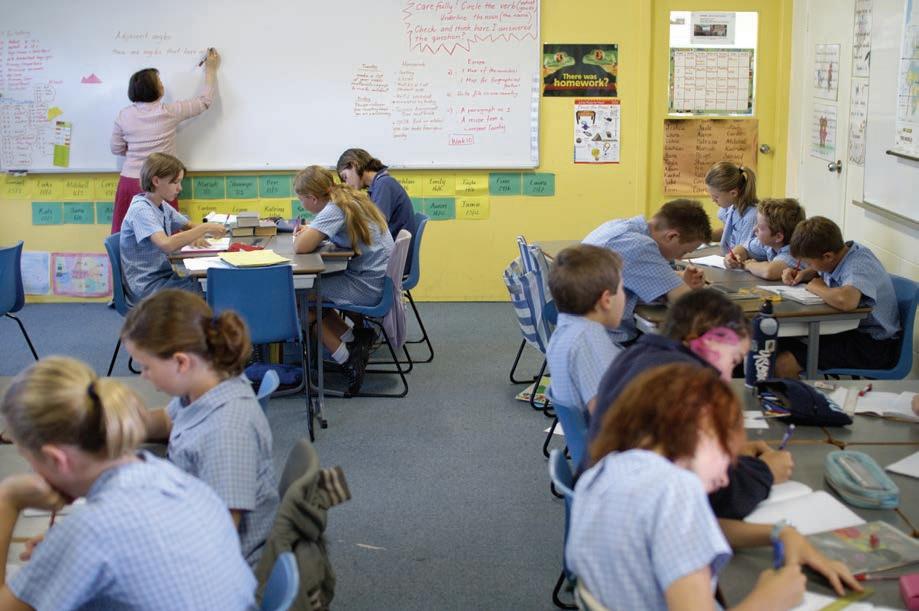
Assessment information provides valuable information for a variety of purposes.
Students and parents need timely and accurate information from teachers about a student’s progress along the learning continuum. Reporting of student progress can be provided in a variety of ways, including verbal feedback, progress charts, the results of formal assessment, and formal reporting.
Teachers can also use the assessment information to evaluate and modify the curriculum program and also identify barriers to learning by analysing student achievement information.
School-wide achievement information can also be analysed to enable the school to monitor the effectiveness of teaching programs.
Assessment takes many forms, and does not have to be limited to high stakes performance tasks. Read the list on the next page.
Identify all of the strategies you have used.
Which are the ones you find most effective? Explain why to a colleague.
Can you add any others?
Informal observation is the ongoing monitoring of student learning behaviours during the everyday classroom program.
Formal assessment is the systematic approach planned to occur at specific points in a period of learning. Teachers can analyse and reflect on specific aspects of student’s work, normally by taking the work away, considering it at some length, and reflecting upon what it reveals of a student’s strengths and areas of need
Students should understand how they learn by reflecting on their own achievements, and develop self awareness and self regulation. Teachers also gain understanding of the student’s perspective on a task, and what they understand and what confuses them.
Valuable information about the student can be shared to the benefit of the student’s learning.
Informal Observation
• Anecdotal records
• Annotated work samples
• Observation of practical activities
• Criteria checklists
• Notes on the student’s reading and writing records
• Student profiles
• Photos and videoing
• Diagnostic testing
Formal Assessment
• School entry assessment
• Writing samples
• Hearing and recording sounds in words
• Cumulative observation records
• Cloze activities
• Objective observations
• Oral performances and presentations
• Outcome or indicator checklists
• Performance monitoring in reading and writing logs (RL,WL,LL)
• Written, oral and practical tests
• Teacher selected portfolio items
• Significant tasks, projects and assignments
• Standardised tests
Student self-assessment and peer assessment
• Annotations to work in folios
• Checklists
• Learning logs
• Group work notes
• Journals
• Personal reports
• Self-assessment sheets,
• Student selected portfolio items
• Peer-assessment proformas
• Whole class sharing time
Discussion and consultation
• With students
• With parents and significant others
• Conversations,
• Interviews and conferences
• Questionnaires
Good assessment is a seamless and enjoyable part of the learning experience.
Assessment is often used to describe an end point of learning
– Assessment OF learning. Assessment of student learning has much greater potential to improve learning when it is used in a diagnostic or formative way – Assessment FOR learning. When planning curriculum, assessment needs to be planned as part of the learning. Teachers need to ask “How will I know enough about the understanding of my pupils to be able to help each of them?”
In their study on the importance of formative assessment in improving student learning, Black and Wiliam (1998) noted,
“When anyone is trying to learn, feedback about the effort has three elements: recognition of the desired goal, evidence about present position, and some understanding of a way to close the gap between the two. All three must be understood to some degree by anyone before he or she can take action to improve learning.”2
Having the purpose of improving learning is a perspective that will impact on the timing and choice of assessment tasks, but also the importance of involving students in self assessment.
2. Black, P. Wiliam.D. (1998) Inside the Black Box. Raising Standards through Classroom Assessment. retrieved from http://www.pdkintl.org/ kappan/kbla9810.htm on 18th August, 2005.

“I’m just dumb. I never learn anything.” Peter grumped down into his chair.
“I’ve heard you say that a few times this week, which is why I’ve asked you to come and see me this lunchtime.” Miss Hudson took out a large folder full of paper. “Do you remember this?”
“It’s my portfolio. I’ve seen that lots of times.” Peter poked at the folder before Miss Hudson opened it.
“It’s a story about what a great learner you are. Have a look at this work you did in grade 1…and how much you learned by the time you were in grade 3 about spelling, full stops and how to turn your great ideas into a funny story. Look at this graph that you did in grade 4 and how much more you learned about graphs when you compare it to this one from grade 6.”
Peter had forgotten many of those long ago tasks. He sat forward. “Yeah, I guess that’s just because I got older.”
“It tells me that you are a learner, Peter, and from these projects I can see that God designed you to have a great imagination. Can you tell me what has happened to take away your confidence?”
Peter slumped back in his chair again. “I can’t do my project. I’ve tried and I just don’t get it.”
Miss Hudson smiled. “Now that is something I can help you with. Let’s use the criteria and standards on your task sheet to work out where you are stuck and how to get unstuck.”
“So being a good learner doesn’t mean I always know what to do. It’s OK to ask for help?” Peter looked hopefully at his teacher.
“I’d say you have just learned something really important Peter. You are a learner!”
Time: Integrating Theme/Topic:
Grade: Teacher:
Leadership in Learning Christian focus: Memory verses:
Embracing
Contribution to Vision of a Learner: Links to other subjects? Community? Affirming Individuals Eg. Learner attributes that need tobe considered Right relationship & enjoymentchallenge Eg. Co-operativestrategies
Evaluating
Which of these activities will be assessment opportunities? (A) links to portfolios? (P)
L’RACE Lesson Plan for Career Planning Unit
Subject & Grade:
Term/Year:
Topic: Teacher:
Leadership in Learning (CWV and connection to wider world)
Clear Vision and Goals This lesson will be successful if...
Individuals Which students need particular attention this lesson?
Resources
ORIENTATION
R – How I will establish the emotional climate
C - Access prior knowledge. Set lesson goals for students (YJWB – Your Job Will Be)
ENHANCING
E - Giving choices to students. What in depth knowledge or connection to life. What scaffolding, modelling, guided practice.
SYNTHESISING
C – Students process their understanding.
EVALUATING
Checking for understanding and feedback on performance
REFLECTION ON THE LESSON:
Validator Name:______________________
Subject:____________________________
Unit covered by assessment item:_________________________________________________________
Validation Checklist:
Leadership in Learning
• Does the assessment activity directly relate to the learning outcomes and work proram assessment plan for this unit?
• Does it relate to a part of the Vision of a Learner?
Right Relationship and Enjoyment:
• Is the task made enjoyable and motivational through context, content, choice, collaboration and/or celebration of successes?
• Is the task and the lead up to the hand in date structured so that as far as it is up to you, all students are able to hand in some work?
• Are the consequences for late and non submission are planned for and have been made clear to students?
Affirming Individuals
• Does the assessment activity allow students to reveal sufficient understanding?
• Are alternative presentation, special consideration and extension policies available to cater for students with temporary or long term special needs?
• Has enough time in class been allowed for conferencing/draft checking of tasks with each child and an average student to achieve a Sound Achievement?
Clear Vision and Goals
• Are criteria and standards informative to students and give direction for improvement?
• Are task sheets well written?
1. In the heading
• School’s name
• Space for students name
• Due date
• Time of year (eg: unit 1, semester 1, 2005)
• Name of the unit or theme
• Timeframe for the task (2 weeks, or 45 minutes)
2. In the task preamble
• The Purpose Of The Task (Refer To The Vision Of The Learner)
• The Intended Audience
• The Genre In Which The Task Is To Be Completed
• The Outcomes Being Assessed.
3. In the task description
• Concise directions for the task in steps.
• Guiding questions that will help structure the response.
• The exact requirements eg: references, bibliography
• The task is clearly reflected in the assessment criteria.
4. Conditions
• Length
Year 8 – assignment word limit of 250-300 words. 2-3 minutes oral presentations. 40 minute exams. Year 9 – word limit of 300/350 words, 3 minute orals, 50 minute exams. Year 10 – 400 – 450 words, 3- 4 minute orals, 60 minute exams.
• Time period from the notification of the task to the draft and due dates.
• Allocation of time for steps eg; class time, 2 library lessons.’
• Expectations for the presentation. Eg: typed, referencing
• Any other information eg; group work, teacher assistance.
5. Evaluation
• Student validation, signing that it is all their work.
• Student self assessment comment.
• Criteria and standards
• Room for teacher comments.
Embracing Challenge
• Does the task involve the active construction of knowledge for real life or life like audiences, or problem based contexts/response to stimuli that are relevant, meaningful, emphasise higher-level thinking and metacognition?
• Has the Teacher Librarian and/or Technology teachers been consulted to enhance assessment resources and experiences?
These pages are to help you learn about what you are learning!
Graduating with CLEAR Values - Collect evidence to demonstrate that you have understood Mackay Christian College values during your Senior years. Your evidence can come from any school experience. You may prefer to record this evidence in your efolio in the portal. It’s a great start to a CV.
Christlikeness
- being an empathetic servant leader
I was a leader when I took charge of....
I was serving others in the group by....
I showed that I can understand how other people feel when I....
Learning
- being a self directed strategic producer
I was in charge of producing....
I organised and planned....
I made sure that I achieved the goal by....
I think the strategies that worked well are....
Excellence - being aresilient problem solver
The problem that I faced was....
The first solution that I tried was....
When that didn’t work, I persisted by trying....
I learned that by persisting and not letting failure stop me, I can....
Attitude
- being acreative, reflective investigator
I investigated....
I was creative because I came up with ideas like....
I thought carefully about what I was doing while I was investigating, which is why....
Respect
- being aresponsive communicator
I improved my communication skills when I....
I was able to change the way I was communicating in response to someone else’s ideas. These changes were....




1. Purchase of this coaching manual enables the purchasing school to use the L’Race material within the manual as it is written, or as a model for developing similar ideas to suit the needs of their own school.
2. Multiple copies of the blank planning proformas may be made for use within the school.


3. If you wish you distribute multiple copies of any other material within this coaching manual, we ask you purchase more copies. This will enable Mackay Christian College Ltd. to continue to develop material to the benefit of Christian teachers, and to the glory of God.
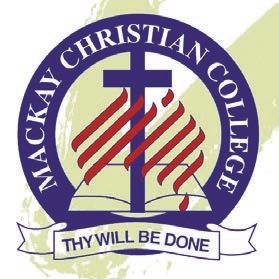

Coaching, workshops and ordering information
Order copies from:
www.mccmky.qld.edu.au or phone Mackay Christian College:


+61 (0) 7 49423377




















































